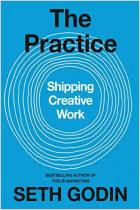Business author Seth Godin’s easy-to-grasp premise is that products must be “purple cows” that stand out from the herd. The metaphor comes from an American nursery rhyme that says: I’ve never seen a purple cow. I never hope to see one. But I can tell you anyhow, I’d rather see than be one. Godin’s advice is quite the opposite of his titular ditty. He says you do want to be a purple cow. You want your product to become a conversation-provoking anomaly, as distinctive and different as possible. Godin’s advice is completely clear – a big accomplishment in today’s business-advice scrum. Here, he offers an elementary but encouraging introduction to advertising, PR and marketing.
Marketing used to be straightforward: Increase advertising to increase distribution to increase sales to increase profits.
Marketing once was far simpler. It was based on “product, pricing, promotion, positioning, publicity and packaging, pass-along and permission.” Today, however, a new “P” is far more important than all the rest: being a “Purple Cow.”
A purple cow is something “remarkable” – the product, the way it is packaged, the way it is positioned, how it is priced or even the store in which it is sold is different from the competition’s product. Your company’s strongest chance for success depends on marketing something truly noteworthy so you emerge from the crowd.
In this new age of media clutter, where advertisers bombard the public unmercifully with countless commercial messages, consumers quickly tune out most stimuli. As a result, most advertised products become virtually invisible. People are simply too busy to pay attention. Indeed, most advertising today has become nothing more than background noise, a great deal of it irritating, at that.
Just 20 years ago, consumers had a great deal more time and far fewer...
Marketing guru Seth Godin is former VP of direct marketing at Google. His many bestsellers have been published in multiple languages. His bestsellers include Tribes, Linchpin, Poke the Box, We Are All Weird, V Is for Vulnerable and What to Do When It’s Your Turn.





























Comment on this summary or Iniciar a Discussão